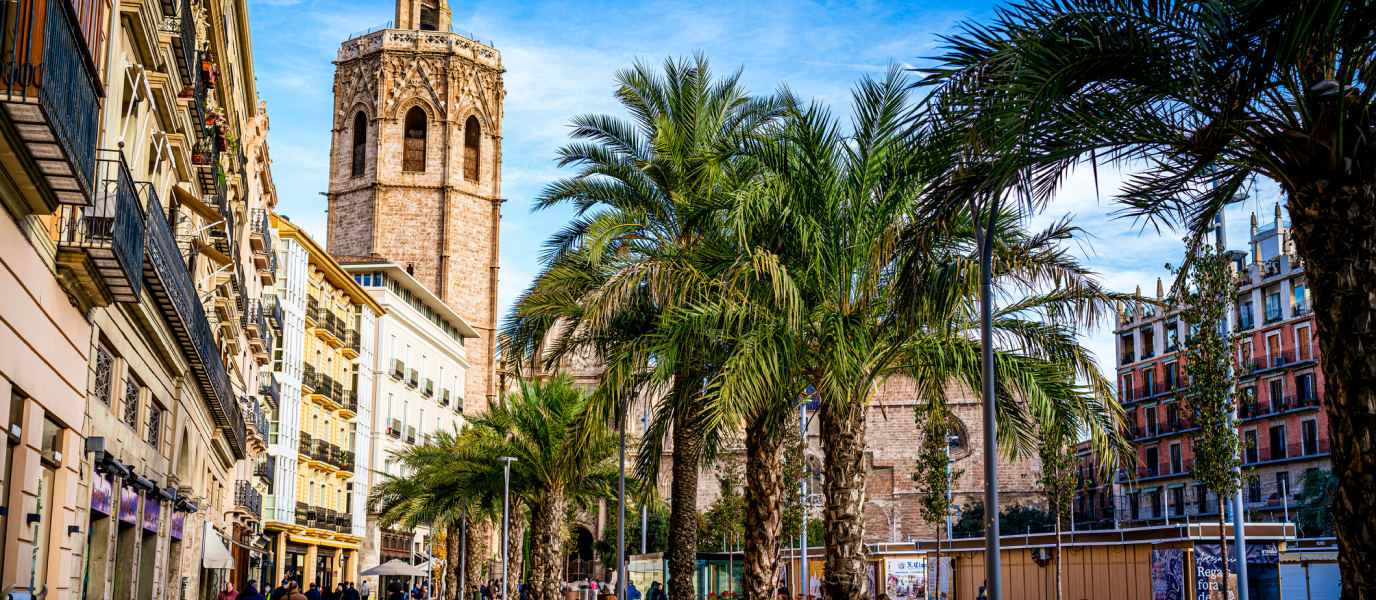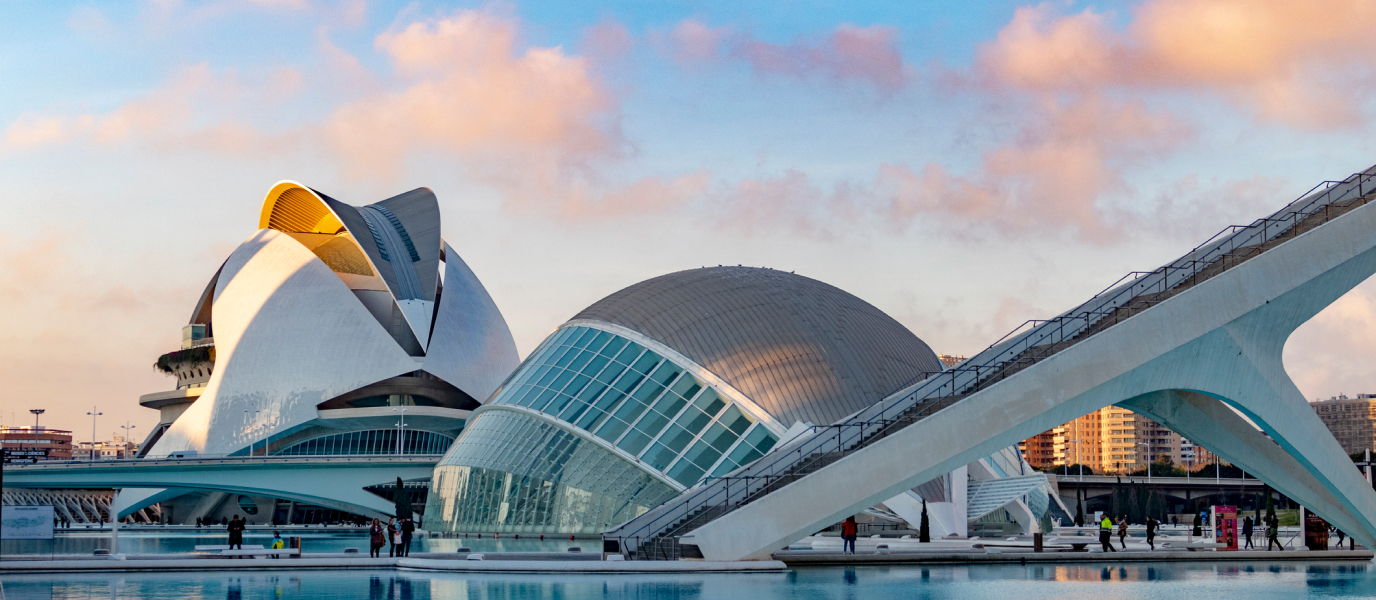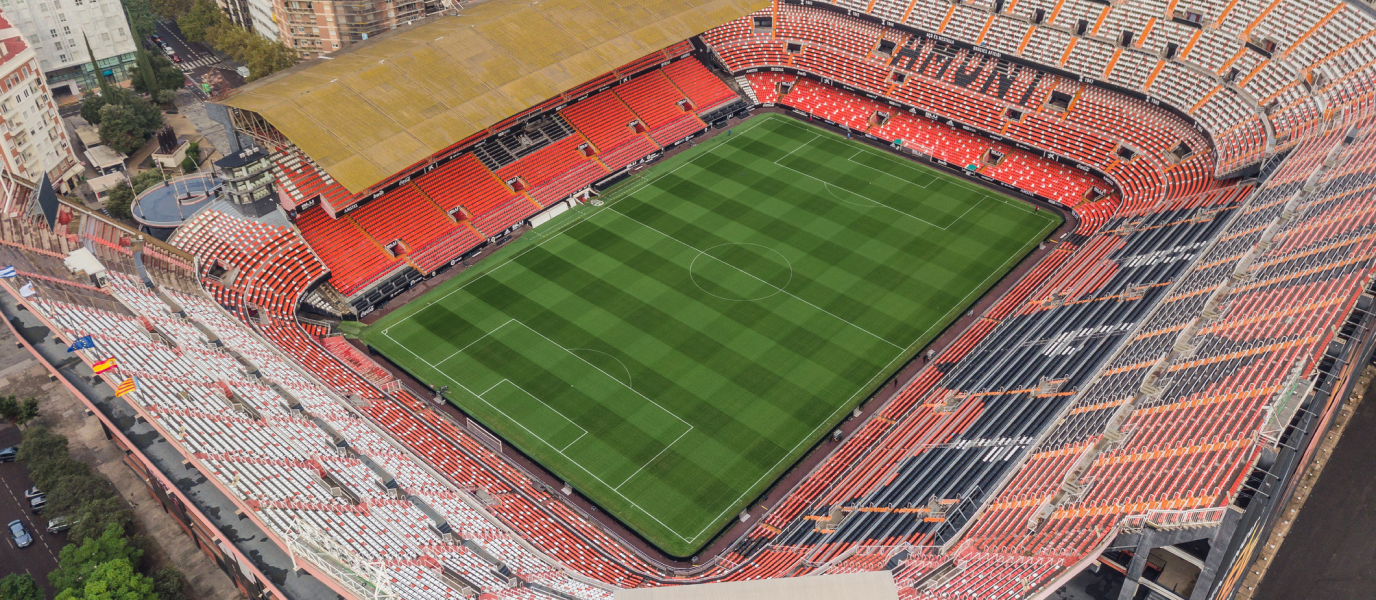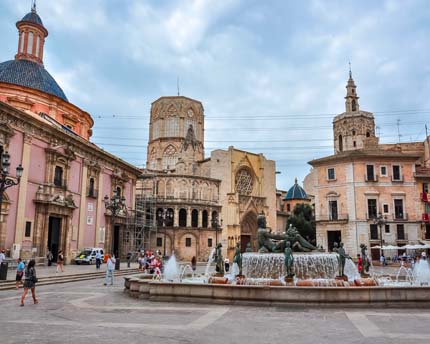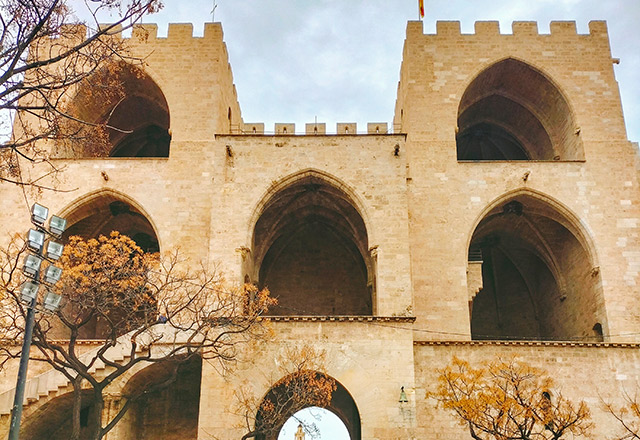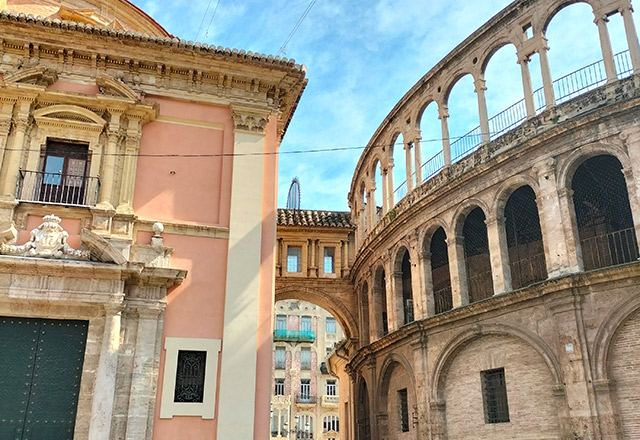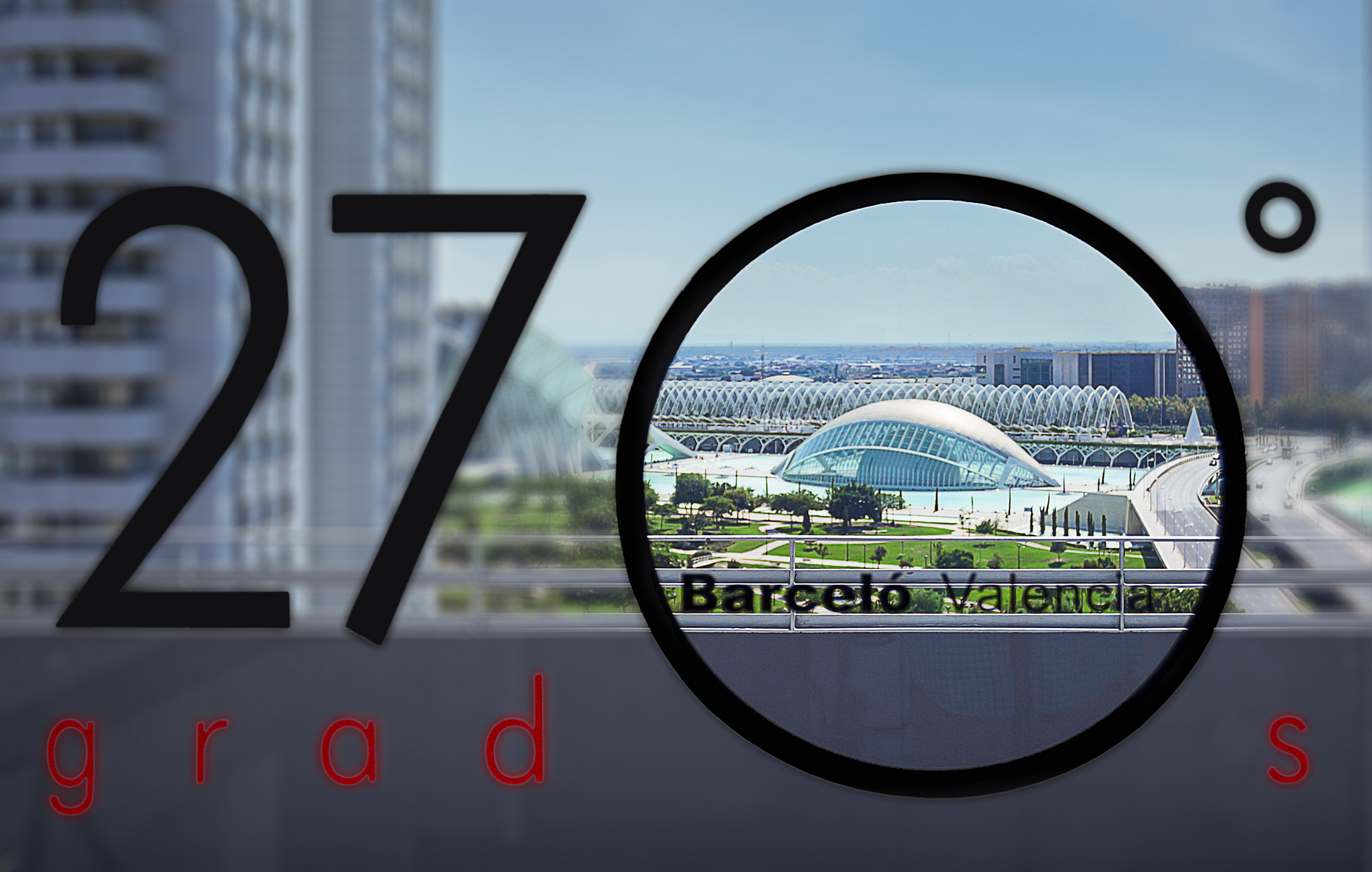El Micalet tower is the Gothic bell tower of Valencia cathedral and is an emblem of the city. You’ll spot it next to the Baroque Porta dels Ferros [Iron Gate] in the Plaça de la Reina.
El Micalet is directly related to free-standing Italian towers known as campanile because it wasn’t originally attached to the Valencia cathedral (link interno). Construction started in the fourteenth century when Andreu Juliá began the project in 1381. Work continued until 1429 and during this time other architects were involved such as Josep Franch and Pere Balaguer. Centuries later, in the eighteenth century, ten more metres were added to its height with a bell gable and two further bells.
Climbing to the top of El Micalet
The tower has a spiral staircase with 207 steps that you can climb all the way to the top. The stairs are worn and very steep but once you reach the top you can walk around its circular terrace, like other bell towers, and enjoy the fantastic views—Valencia is so flat this is hard to do elsewhere. A surprising fact is that its perimeter and height have exactly the same dimensions: 51 metres. The original terrace railing disappeared in the eighteenth century and during the nineteenth-century refurbishment a metal railing was installed in its place. Today the railing is once again made of stone, although it’s different from the original.
El Micalet is octagonal and rises up in four sections, topped by a bell gable that was added in the eighteenth century. As mentioned above, when it was first constructed the bell tower was free-standing and was subsequently joined to the cathedral in the fifteenth century by a passageway. The best view of the tower in all its splendour is from the Plaça de la Reina (link interno); you can take some great photos from the square.
The balcony of Valencia
The upper part has 14 bells that were originally used to warn the city about approaching pirates and to call people to mass. The biggest bell is called Micalet [Michael], hence the bell tower’s name. The original Micalet bell was blessed on 29 September 1418, the feast day of Saint Michael. The replacement that is seen today dates back from 1532 and is used together with the Torre dels Quarts from 1736 to mark the hours.
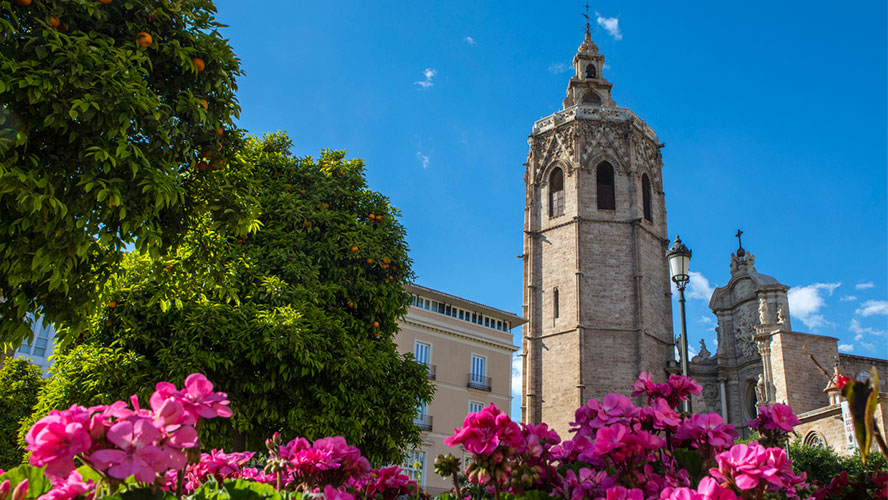
As you climb up El Micalet you’ll discover three rooms:
- The prison: a room that was used to retain people who came to the cathedral to flee the law. It has a window and is only illuminated one day a year, on 15 August, the Assumption of Mary public holiday.
- The bell-ringers’ room: this room has two windows and vaults and is used by the bell-ringers. They could sometimes climb up here up to 300 times a year. At present, this room is not open to the public.
- The bell room: it has eight open windows, all filled with bells except for one where the spiral staircase is located. It’s the only room that can be visited every morning and on the days the bells are rung, under the supervision of the cathedral bell-ringers. This room was altered when the bells were electrified and the wooden doors were replaced. Each of the 14 bells has a name:
- Caterina
- Jaume
- Úrsula
- Pau
- Arcís
- Micalet
- Maria
- Vicent
- Andreu
- Manuel
- Barbera
- Violant
- Quarts
- Cimborret
The bells are used on different occasions, when someone passes away, for example, or to mark a festival. Caterina is the oldest bell and dates from 1305 while the most recent is Violant, which was installed in 1735. It’s the largest set of Gothic bells in Spain and Micalet is one of the biggest bells in the country, weighing seven and a half tonnes.
The construction history of El Micalet
In 1381, Jaime de Aragón, bishop of Valencia, persuaded his cousin King Peter IV ‘the Ceremonious’ to build a taller tower than the Romanesque structure that stood at the time next to the chapel of the Holy Chalice. To carry out the project it was necessary to demolish several neighbouring houses. Construction of the tower saw many delays and various master builders were in charge of the works—you can even see 29 different marks representing the signatures of each stonecutter.
The Campanar Nou, as the project was first called, was a free-standing structure that was not attached to the cathedral. A wooden grille closed off the entrance to the spiral staircase.
In 1418, the bell that marked the hours was installed and because it was blessed on 29 September, the feast day of Saint Michael the Archangel, the whole tower was named El Micalet. The tower itself was not yet completed because the skylight still had to be added. The upper needle first appeared in a project by Antonio Dalmau that was never realised, but the design can be seen in the Museu Històric Municipal de València [Municipal History Museum].
The tower was finally joined to the cathedral at the end of the fifteenth century when the central nave of the temple was expanded to reach El Micalet. The bell tower is currently accessed through an angular gateway with archivolts.
One of the outer walls has a special stone that is used as a type of alarm system for the bell-ringers—when it’s hit with an object, the sound reaches all the way up to the bell-ringers’ room. See if you can find it!




































































